신생아의 수면 패턴, Sleep pattern in newborn infants
- 신생아에 따라 1일 총 수면 시간이 정상적으로 조금씩 다르다.
- 대부분의 신생아들은 생후 첫 4주 동안 하루 평균 18∼20시간 잔다.
- 다른 연구에 의하면 1일 평균 15~20시간 잔다. 즉 15~20시간 1일 평균 잔다.
- 대부분의 신생아들은 한 번에 2~3시간 동안 내처 자는 것이 보통이다.
- 자고 난 후 깨서 먹고 곧 다시 자는 것이 보통이다.
- 그러나 일부의 신생아들은 상당히 규칙적으로 매 2시간마다 깨서 먹고 자기도 하고, 4~6시간동안 계속 잔 후 깨서 먹기도 한다.
- 신생아기 동안에는 “24시간 밤낮 수면과 깨어 있는 주기”가 불확실하다. 즉, 언제 자고, 얼마동안 자는 스케줄이 확실치 않다 .
- 그러나 생후 6주부터 자는 시간과 깨어 있는 시간이 어느 정도 확실히 구분되기 시작해서 생후 16주에는 대부분의 영아들은 밤과 낮 시간에 맞춰 밤에는 더 자고 낮에는 더 오랫동안 깨어 있다.
- 신생아들은 대개 밤낮 차이가 없이 밤과 낮에 거의 동등한 시간 동안 잔다. (부모도 반의사가 되어야한다-소아가정간호 백과-제 22권 아들 딸 이렇게 키우시오-잠 참조)
- 렘 수면기 동안에는, 신생아들이나 영아들은 정상적으로 팔다리를 움칠움칠할 수 있고, 팔다리를 뻗쳤다 오므렸다 할 수 있다.
- 눈꺼풀 아래에 있는 안구가 움직이는 것을 관찰할 수 있다.
- 정상적으로 불규칙하게 숨을 쉴 수 있다.
- 소위 배 안 웃음을 웃을 수도 있다.
- 입을 쩝쩝거리면서 잘 수 있다.
- 비 렘 수면기에 들어가면, 신생아들이나 영아들은 깊은 잠에 빠지고 규칙적으로 숨을 쉬고 렘 수면기 동안에 생겼던 몸의 움직임이 덜해지는 것이 보통이다.
- 이런 잠자는 패턴은 보통 생후 3개월까지 지속된다.
- 신생아가 잘 먹지 않거나, 잘 자지 않거나, 또 잘 먹지도 않고 잠만 계속 많이 자면 그 신생아에게 어떤 이상이 있나 속히 알아보아야 한다.
- 신생아들이나 영아들을 재울 때 얼굴은 천장을 향하고 등은 바닥에 대고 반듯이 눕혀 재우는 수면체위를 권장한다.
- 등을 바닥에 대고 재우면 아기가 덮은 담요 등으로 코나 입 등의 기도가 막혀 질식될 위험성은 적고 영아 돌연사가 생길 가능성이 적다.
- 그럼, 언제까지 영아들을 등을 바닥에 대고 재워야 하나? 그 질문에 확실히 답하기가 어렵다.
- 그러나 영아들이 스스로 엎치고 뒤칠 때까지는 그들을 재울 때 등을 바닥에 대고 재우는 것을 권장한다.
- 그렇지만, 등을 바닥에 대고 자던 아기가 먹었던 모유나 인공영양을 토하거나 넘길 때 구토물이 기도 속으로 흡인될 가능성이 더 많다.
- 기도 속으로 흡인된 구토 물로 기도 속이 막혀 질식될 수도 있고, 또 흡인 폐렴 등이 생길 수도 있다.
- 그와 반대로 얼굴이 바닥으로 향하고 배를 바닥에 대어 엎어 재울 때는 신생아들이나 영아들이 토할 때 구토 물이 기도 속으로 흡인될 위험성은 적지만 담요 등으로 코와 입 등이 막힐 가능성은 더 있다. 그로 인해 호흡곤란이나 질식돼서 영아 돌연사가 생길 가능성이 더 많다.
- 신생아들이나 영아들을 재울 때 옆으로 눕혀 재울 도 있지만 그 수면 체위를 계속 취하고 오랫동안 계속 자게 하는 것도 그리 쉽지 않다.
- 모유나 인공영양, 또는 이유식을 먹인 바로 후 신생아들이나 영아들의 오른쪽 옆으로 눕혀 재우는 것이 이상적인 것 같지만 그 체위를 계속 유지하면서 오랫동안 잘 수 없기 때문에 그것도 쉬운 방법이 아니고 권장 할 수 없다.
- 신생아들이나 영유아들을 베개 베어 눕혀 재우면 베개로 아기의 코나 입 등이 막혀 호흡곤란이 생길 수 있고 질식될 수 있다. 그러나 부드럽고 보기 좋은 인형이나 인형 곰 등을 아기 크립 한쪽에 놓아둘 수는 있다.
- 부모도 반의사가 되어야한다-소아가정간호 백과-제22권 아들 딸 이렇게 키우시오” – 신생아들, 영아들, 유아들의 정상 수면 패턴, 잠 훈련과 그 문제를 참조. 그리고 다음 “신생아의 수면 체위”를 참조한다.
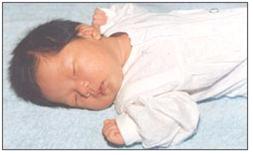
사진 2-234. 등을 바닥에 대고 재운다.
Copyright ⓒ 2011 John Sangwon Lee, MD., FAAP
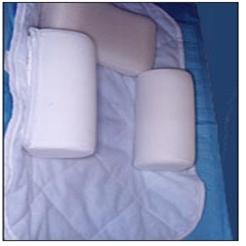
사진 2-235. 신생아들이나 생후 4개월 정도까지의 영아들을 재울 때 등을 바닥에 대고 얼굴이 천장을 향하게 머리 자세를 계속 유지하면서 자게 하는 수면 체위 고정 베개도 있다. 그 것의 효과와 좋은 점 나쁜 점이 무엇 인지는 확실치 않다. 단골 소아 청소년과 의사에게 문의해서 권장하면 사용해도 좋을 것이다.
Copyright ⓒ 2011 John Sangwon Lee, MD., FAAP
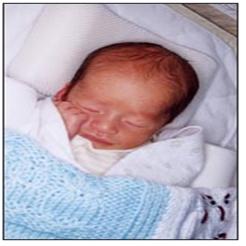
사진 2-236.신생들이나 생후 4개월 정도까지 영아들을 재울 때 등을 바닥에 대고 얼굴이 천장을 향하게 머리 자세를 계속 유지하면서 자게 하는 수면 체위 고정 베개도 있다.
그것의 효과와 좋은 점 나쁜 점이 무엇 인지는 확실치 않다. 단골 소아 청소년과 의사에게 문의해서 권장하면 사용해도 좋을 것이다.
Copyright ⓒ 2011 John Sangwon Lee, MD., FAAP
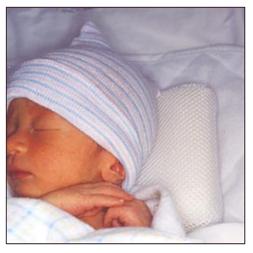
사진 2-237. 렘 수면기에서 자고 있는 신생아,
Copyright ⓒ 2011 John Sangwon Lee, MD., FAAP
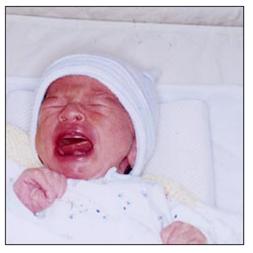
사진 2-238. 깨서 젖 달라고 울고 있는 신생아
Copyright ⓒ 2011 John Sangwon Lee, MD., FAAP
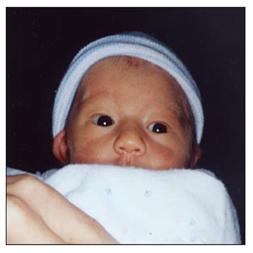
사진 2-239. 눈을 말똥말똥 뜨고 혼자서 놀기도 하고
Copyright ⓒ 2011 John Sangwon Lee, MD., FAAP
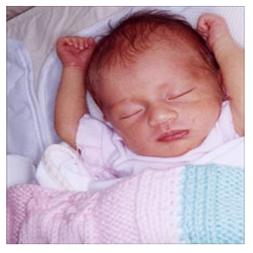
사진 2-240. 비 렘 수면기에서 자고 있는 아기는 기지개도 펴고 자기도 한다.
Copyright ⓒ 2011 John Sangwon Lee, MD., FAAP
Sleep pattern in newborn infants 신생아의 수면 패턴
- The total sleep time per day varies slightly depending on the newborn.
- Most newborns sleep an average of 18-20 hours per day during the first 4 weeks of life.
- Other studies have shown that they sleep an average of 15 to 20 hours per day.
- Newborns sleep on average for 15-20 hours a day.
- Most newborns usually sleep on their own for 2-3 hours at a time.
- It is common to wake up, eat, and go to bed again soon after sleeping.
- However, some newborns wake up and eat every two hours fairly regularly, and sleep for 4-6 hours and then wake up and eat.
- During the neonatal period, the “24-hour day and night sleep and waking cycle” is uncertain.
- In other words, the schedule of when to sleep and for how long is not clear. However, starting from the 6th week of age, the time to sleep and the time of awakening began to be somewhat clearly differentiated.
- At 16 weeks of age, most infants sleep more at night and stay awake for longer during the day according to the night and daytime.
- Newborns usually sleep for about the same amount of time between night and day, with no difference between day and night.
- (Parents should also be at least the half-doctors-Encyclopedia of Child and Family Nursing-Book 22, Raise Sons and Daughters-See Sleep) During REM sleep, newborns and infants are able to shrug their limbs normally and stretch their limbs in and out.
- You can observe the movement of the eyeball under the eyelid. Newborns can breathe normally and irregularly.
- Newborns can also laugh at what is called a laugh in the stomach.
- Newborns can sleep with their mouths to open and close like to eat.
- When entering the non-REM sleep phase, newborns and infants fall into deep sleep, breathe regularly, and the body movements that occur during the REM sleep phase are usually reduced.
- This sleeping pattern usually lasts up to 3 months of age.
- If the newborn does not eat well, sleeps well, and sleeps a lot, it is necessary to quickly find out what is wrong with the newborn.
- When sleeping newborns or infants, it is recommended to lay down on the floor with the face facing the ceiling and the back to sleep.
- If newborns sleep with their back on the floor, there is less risk of suffocation and sudden infant death due to clogged airways such as the nose and mouth with blankets covered by the baby.
- So, how long do you have to put your infants to sleep with their backs on the floor? It is difficult to answer that question for sure.
- However, it is recommended that infants sleep with their backs on the floor until they fall on their own and fall behind.
- However, vomiting is more likely to be aspirated into the airways when a baby who sleeps on his back vomits or passes over the breast milk or artificial nutrients it ate. Vomiting water aspirated into the airways may block the airways and cause suffocation, or aspiration pneumonia may occur.
- On the contrary, when sleeping on the floor with the face facing the floor, the risk of vomiting water being aspirated into the airways when newborns or infants vomit is less, but there is a greater possibility of clogging the nose and mouth with blankets.
- It is more likely to cause sudden infant death due to shortness of breath or suffocation.
- Newborns and infants may be laid on their side to sleep when they sleep, but it is not easy to keep the sleeping position and let them sleep for a long time.
- It seems ideal to lay on the right side of newborns or infants to sleep right after feeding breast milk, artificial nutrition, or baby food, but it is not an easy method and cannot be recommended because they cannot sleep for a long time while maintaining their position.
- If newborns or infants are laid on a pillow and laid to sleep, the baby’s nose or mouth may be blocked with a pillow, resulting in difficulty breathing and suffocation.
- However, you can put a soft, nice doll or a stuffed bear on one side of the baby creep.
- Parents should also be at least the half-doctors-Encyclopedia of Pediatrics and Family Nursing-Volume 22, Raise Sons and Daughters”-Refer to the normal sleep patterns of newborns, infants and toddlers, sleep training and its problems, and then “Sleep Positions in Newborns.”

- Photo 2-234. Put your back on the floor and put it to sleep. Copyright ⓒ 2011 John Sangwon Lee, MD., FAAP

- Photo 2-235. When sleeping newborns or infants up to 4 months of age, there is also a sleeping position fixing pillow that allows you to sleep while keeping your head posture with your newborn’s face facing the ceiling when sleeping. It’s not clear what it works and what’s good and what’s bad. If you ask a regular pediatrician and adolescent doctor and recommend it, you may use it. Copyright ⓒ 2011 John Sangwon Lee, MD., FAAP

- Photo 2-236. There is also a sleeping position fixing pillow that allows newborns or infants to sleep until 4 months of age with their backs on the floor and their faces facing the ceiling while maintaining their head posture. It’s not clear what it works and what’s good and what’s bad. If you ask a regular pediatrician and adolescent doctor and recommend it, you may use it. Copyright ⓒ 2011 John Sangwon Lee, MD., FAAP

- Photo 2-237. Newborn baby sleeping in REM sleep phase. Copyright ⓒ 2011 John Sangwon Lee, MD., FAAP

- Photo 2-238. Newborn baby waking up and crying for breastfeeding. Copyright ⓒ 2011 John Sangwon Lee, MD., FAAP

- Photo 2-239. A newborn opens their eyes and play alone. Copyright ⓒ 2011 John Sangwon Lee, MD., FAAP

- Photo 2-240. The baby sleeping in the non-REM sleep phase stretches and sleeps. Copyright ⓒ 2011 John Sangwon Lee, MD., FAAP
출처 및 참조 문헌
- NelsonTextbook of Pediatrics 22ND Ed
- The Harriet Lane Handbook 22ND Ed
- Growth and development of the children
- Red Book 32nd Ed 2021-2024
- Neonatal Resuscitation, American Academy Pediatrics
- www.drleepediatrics.com 제1권 소아청소년 응급 의료
- www.drleepediatrics.com 제2권 소아청소년 예방
- www.drleepediatrics.com 제3권 소아청소년 성장 발육 육아
- www.drleepediatrics.com 제4권 모유,모유수유, 이유
- www.drleepediatrics.com 제5권 인공영양, 우유, 이유식, 비타민, 미네랄, 단백질, 탄수화물, 지방
- www.drleepediatrics.com 제6권 신생아 성장 발육 육아 질병
- www.drleepediatrics.com제7권 소아청소년 감염병
- www.drleepediatrics.com제8권 소아청소년 호흡기 질환
- www.drleepediatrics.com제9권 소아청소년 소화기 질환
- www.drleepediatrics.com제10권. 소아청소년 신장 비뇨 생식기 질환
- www.drleepediatrics.com제11권. 소아청소년 심장 혈관계 질환
- www.drleepediatrics.com제12권. 소아청소년 신경 정신 질환, 행동 수면 문제
- www.drleepediatrics.com제13권. 소아청소년 혈액, 림프, 종양 질환
- www.drleepediatrics.com제14권. 소아청소년 내분비, 유전, 염색체, 대사, 희귀병
- www.drleepediatrics.com제15권. 소아청소년 알레르기, 자가 면역질환
- www.drleepediatrics.com제16권. 소아청소년 정형외과 질환
- www.drleepediatrics.com제17권. 소아청소년 피부 질환
- www.drleepediatrics.com제18권. 소아청소년 이비인후(귀 코 인두 후두) 질환
- www.drleepediatrics.com제19권. 소아청소년 안과 (눈)질환
- www.drleepediatrics.com 제20권 소아청소년 이 (치아)질환
- www.drleepediatrics.com 제21권 소아청소년 가정 학교 간호
- www.drleepediatrics.com 제22권 아들 딸 이렇게 사랑해 키우세요
- www.drleepediatrics.com 제23권 사춘기 아이들의 성장 발육 질병
- www.drleepediatrics.com 제24권 소아청소년 성교육
- www.drleepediatrics.com 제25권 임신, 분만, 출산, 신생아 돌보기
- Red book 29th-31st edition 2021
- Nelson Text Book of Pediatrics 19th- 21st Edition
- The Johns Hopkins Hospital, The Harriet Lane Handbook, 22nd edition
- 응급환자관리 정담미디어
- Pediatric Nutritional Handbook American Academy of Pediatrics
- 소아가정간호백과–부모도 반의사가 되어야 한다, 이상원 저
- The pregnancy Bible. By Joan stone, MD. Keith Eddleman, MD
- Neonatology Jeffrey J. Pomerance, C. Joan Richardson
- Preparation for Birth. Beverly Savage and Dianna Smith
- 임신에서 신생아 돌보기까지. 이상원
- Breastfeeding. by Ruth Lawrence and Robert Lawrence
- Sources and references on Growth, Development, Cares, and Diseases of Newborn Infants
- Emergency Medical Service for Children, By Ross Lab. May 1989. p.10
- Emergency care, Harvey Grant and Robert Murray
- Emergency Care Transportation of Sick and Injured American Academy of Orthopaedic Surgeons
- Emergency Pediatrics A Guide to Ambulatory Care, Roger M. Barkin, Peter Rosen
- Quick Reference To Pediatric Emergencies, Delmer J. Pascoe, M.D., Moses Grossman, M.D. with 26 contributors
- Neonatal resuscitation Ameican academy of pediatrics
- Pediatric Nutritional Handbook American Academy of Pediatrics
- Pediatric Resuscitation Pediatric Clinics of North America, Stephen M. Schexnayder, M.D.
-
Pediatric Critical Care, Pediatric Clinics of North America, James P. Orlowski, M.D.
-
Preparation for Birth. Beverly Savage and Dianna Smith
-
Infectious disease of children, Saul Krugman, Samuel L Katz, Ann A.
- 제4권 모유, 모유수유, 이유 참조문헌 및 출처
- 제5권 인공영양, 우유, 이유, 비타민, 단백질, 지방 탄수 화물 참조문헌 및 출처
- 제6권 신생아 성장발육 양호 질병 참조문헌 및 출처
- 소아과학 대한교과서
|
Copyright ⓒ 2015 John Sangwon Lee, MD., FAAP 미국 소아과 전문의, 한국 소아청소년과 전문의 이상원 저 “부모도 반의사가 되어야 한다”-내용은 여러분들의 의사로부터 얻은 정보와 진료를 대신할 수 없습니다. “The information contained in this publication should not be used as a substitute for the medical care and advice of your doctor. There may be variations in treatment that your doctor may recommend based on individual facts and circumstances. “Parental education is the best medicine.” |